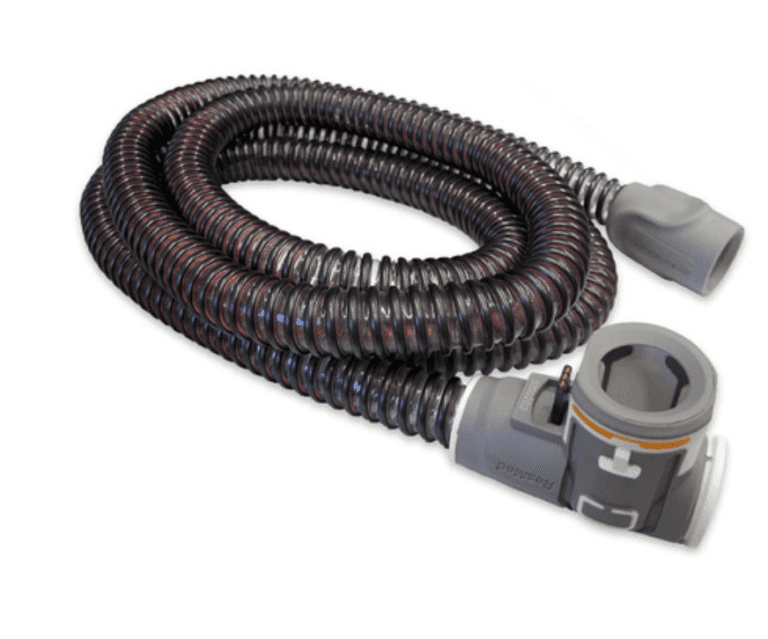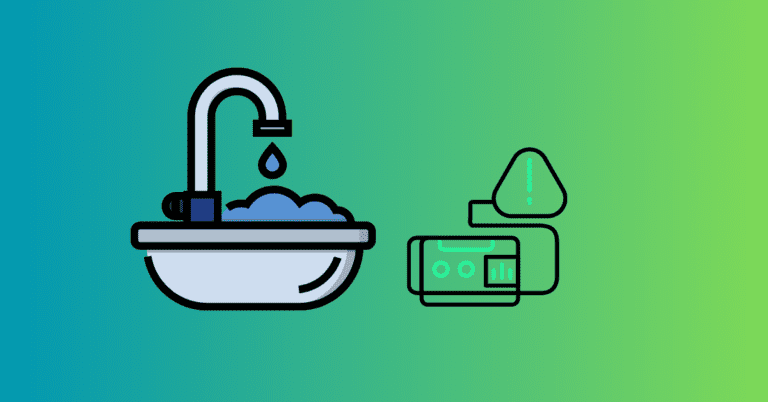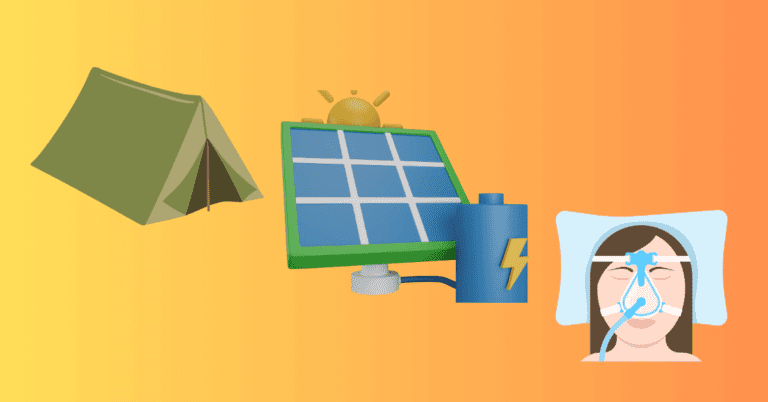Best Sleep Positions to Avoid CPAP Strap Marks
Jeremy Smith is a long-term CPAP user and sleep apnea advocate. After being diagnosed with severe obstructive sleep apnea, he created ByJeremySmith.com to help others navigate CPAP therapy through personal stories, gear reviews, and practical advice.
Are you waking up with red indentations from your CPAP straps?
I know what it’s like, especially if you are running late for work.
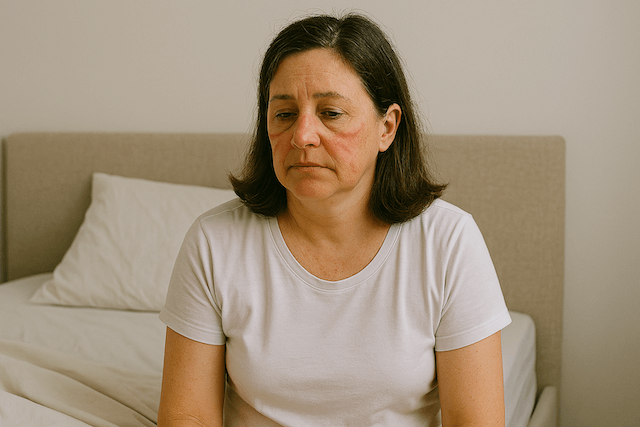
When I was diagnosed with severe sleep apnea, I started CPAP therapy and saw a massive improvement in my sleep — but those strap marks made it feel like I was wearing my mask long after I’d taken it off.
Good news? You can seriously reduce or eliminate those lines by adjusting your sleep.
Let’s explore the best sleep positions to prevent CPAP strap marks and a few game-changing accessories I personally recommend to help you wake up fresh-faced and comfortable.
(For the full guide on tackling strap lines, check out my complete post on preventing CPAP mask marks.)
Why Strap Marks Happen
CPAP strap marks are caused by friction and pressure from your mask’s headgear, especially when pressed between your face and a pillow. Side and stomach sleepers usually have it worst, but even back sleepers can wake up with lines if their straps are too tight or worn out.
Other contributing factors:
- Over-tightened straps
- Poor mask fit
- Old or stretched-out headgear
- Dry or sensitive skin
The proper sleep position can make a huge difference — often overnight.
Best Sleep Positions to Prevent CPAP Strap Marks
Back Sleeping (Supine)
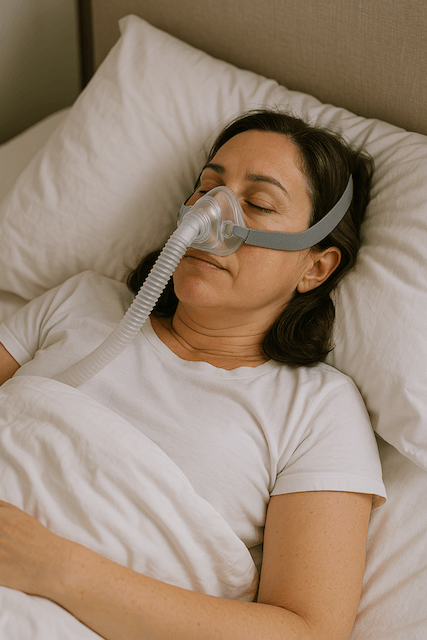
This is, hands down, the most strap-friendly position. When you sleep on your back, your face isn’t pressing against the pillow, which means less friction and fewer pressure points on your straps.
Why it works:
- Keeps the straps off your cheeks
- Minimizes mask shifting
- Reduces deep indentations and creases
Pro tip: Use a wedge or memory foam pillow that supports your neck and keeps your airway open. I use one that elevates my head slightly — it also helps reduce sinus congestion and acid reflux.
Side Sleeping (With the Right Pillow)
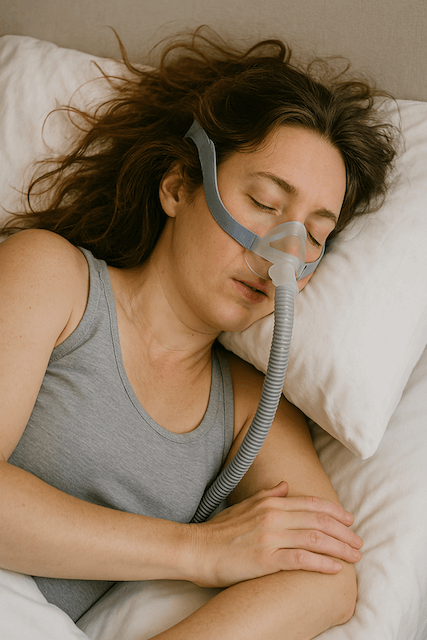
Side sleeping is still one of the best positions for people with sleep apnea — but it’s brutal on your mask if you don’t have the right setup.
What helps:
- A CPAP pillow with cutouts to keep the mask from pressing into your face
- Soft memory foam that supports your head without pushing your mask around
- Swapping sides through the night to even out pressure
Check out my favorite CPAP mask liners for even more protection — they add a layer between your skin and the strap, reducing marks and irritation.
Reclined Side Sleeping (Hybrid Position)
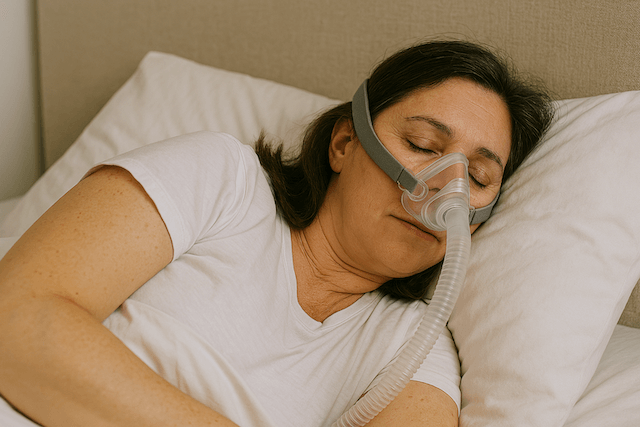
This one’s a happy medium. You’re technically on your side, but with your upper body slightly reclined. It keeps the mask centered and reduces the chances of squishing it into your face.
Here’s how to try it:
- Use a wedge pillow or an adjustable bed to elevate your head and torso
- Combine it with a CPAP pillow that has deep side cutouts
This is the setup I use when I want side-sleeping comfort without the next-morning face creases.
Extra Tips to Minimize Strap Marks
Use Strap Pads or Covers
Strap covers are soft fabric wraps that cover the silicone or Velcro parts of your headgear. They create a barrier between the strap and your skin, which helps distribute pressure and reduce friction.
I use the super soft and machine-washable Snugz full-mask mask liners. Total game-changer.
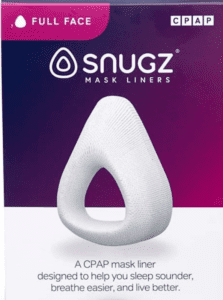
👉 Grab Snugz Full-Face Liners on Amazon
Don’t Crank Down the Straps
If your mask feels like a wrestling mask, something’s off. Over-tightening is a common mistake. A properly fitted mask should sit snugly without digging in.
Adjust the top and bottom straps differently to get the right seal, or switch mask types if you constantly overtighten them just to prevent leaks.
Use a CPAP Mask Liner
Mask liners aren’t just for comfort — they actually help with marks, too. They soften the contact between your face and the mask, soak up moisture, and can even reduce leaks.
You can read my full review of the best CPAP mask liners here — I break down options for full face, nasal, and nasal pillow masks.
Moisturize Strategically
Dry skin is more prone to indentation and irritation. I use a light, fragrance-free moisturizer 30–60 minutes before bed. Give it time to absorb so it doesn’t interfere with the mask seal.
Avoid oily creams — they can cause your mask to slip and break down the silicone over time.
Switch to a Minimal-Contact Mask
Some masks are better for preventing strap marks than others. Consider switching if your current setup makes you look like you fell asleep on a waffle iron.
Low-mark options:
- Nasal pillow masks – minimal facial contact (like the ResMed AirFit P10)
- Top-of-head hose masks – like the DreamWear or N30i, which reduce side strap pressure
- Minimalist nasal masks cradle the nose without heavy cheek straps
Stomach Sleepers: What Can You Do?
I won’t sugarcoat it—stomach sleeping with a CPAP is rough. The pressure from the pillow almost guarantees strap marks, especially on full-face masks.
If you can’t switch positions:
- Use a CPAP pillow with deep cutouts
- Choose a nasal pillow mask with a top-of-head hose connection
- Train yourself to sleep more on your side with a body pillow or wedge
Best Pillows to Help Avoid Strap Marks
Top Picks:
- Contour CPAPMax 2.0 Pillow – specifically designed for CPAP users with side cutouts
- EnduriMed CPAP Pillow – affordable and supportive
- Tempur-Pedic TEMPUR-Cloud Pillow – suitable for back sleepers, ultra-soft support
What to Avoid:
- Flat, unsupportive pillows that increase friction
- Overly thick pillows that push your head forward
- Old pillows that have lost their shape
My Nightly Routine (Strap-Mark-Free Since 2022)
Here’s exactly what I do:
- Clean and moisturize my face early in the evening
- Use strap covers on both sides of my headgear
- Switch between a nasal pillow and nasal mask depending on how I plan to sleep
- Sleep on my back with a CPAP pillow and wedge
I used to wake up with deep grooves on both cheeks, sometimes even across the bridge of my nose. Now? My face feels normal — no marks, no irritation, no “CPAP face.”
Final Thoughts
You can sleep comfortably with your CPAP and wake up without red lines across your face. It all comes down to sleep position, gear, and a little prep.
- Try back sleeping first
- Upgrade your pillow setup
- Use liners and strap covers for extra comfort
- Don’t overtighten your mask — let it do the work
And if you want to go deeper, I’ve compiled a complete guide on preventing CPAP strap marks and mask lines, including tips for every skin type and mask style.
Disclaimer: The content on this blog is for informational and educational purposes only and is not a substitute for professional medical advice. Always speak with your doctor or sleep specialist before starting, stopping, or changing any treatment or therapy related to sleep apnea or CPAP use.


